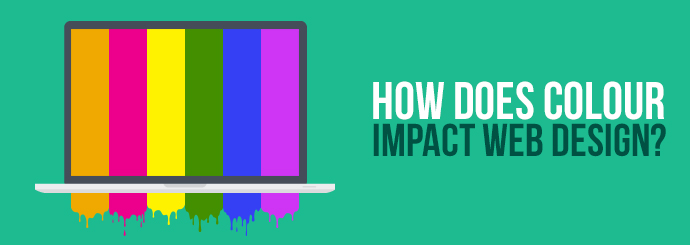Creating a website that accurately reflects a company message, mood or image can be profoundly important when it comes to public perception of a brand.
That much is fairly obvious and it doesn’t take a genius the level of Leonardo Einstein to tell you that.
However, did you know that the very colours you use on said website can have a profound impact as well? It’s true – just ask Albert Da Vinci!
Don’t be left red-faced with an off-colour website. Leave the competition green with envy and get it right as we serve up these colourful tips on a silver platter.

Importance of Colour in Web Design
A tonal misfire can be an instant turn-off for users and it’s no exaggeration to say that poor colouration can effectively deter custom and hinder business as a result.
For example, basic design knowledge will tell you that solid black text on a navy background will ultimately make the copy virtually unreadable – a digital sin if there ever was. Shame! Shame!
Similarly, placing white text on a bright yellow background is enough to sear corneas to the point of snowblindness, which I think we can all agree is not good for user experience.
Worse still, basic mistakes like this make a site immediately appear amateur which, in turn, makes your business seem second-rate as a result, ultimately impacting conversions.
If the web content itself is the leading man, the colour scheme deserves an Oscar for “Best Supporting Actor”. As such, getting it right is paramount.
Colour and Brand Association
Colour and branding go hand-in-hand like beer and pizza (don’t judge) and effective use of a shade can make that colour instantly associated with a brand.
In fact, according to a study by the University of Loyola (sadly, that’s “Loyola” – not “Crayola”) found that colour can increase brand recognition by up to 80%.
When you think about it, it makes perfect sense too. Can you imagine the McDonald’s M in emerald green? Or picture the Coca-Cola logo emblazoned in purple and yellow?
A lot of time and effort goes into establishing brand colours and so too should the colours you use in your website design.
Unless you’re Mark Zuckerberg, who simply chose blue because he’s colourblind (#FactOfTheDay).
Colour and Web Design
Colours have long been associated with a wide range of moods, feelings and emotions; for example, purple is often used to represent prestige and sophistication, while yellow is typical for happiness and optimism.
The same applies to websites. For example, the combination of greens, blues and whites is typical for tech sites, while bright and vibrant, high contrasting colours are often used for professional websites.
Colours and Services
In fact, this trend is so common that consumers can often subconsciously determine the nature of a business by the colours alone. As such, sometimes the colours can virtually pick themselves.
We asked company design expert, Jenna Francis, who had these pearls of wisdom to add:
“At Designer Websites, we’ve created hundreds of sites for a wide range of clients and have seen first-hand that colour plays a huge role in reinforcing the products and services on offer.
For example, we work with a number of lawncare businesses whose sites naturally look great with earthy tones, like darker greens, light browns and soft greys – colours you associate with the garden.
Meanwhile, we created a site for a company that sells sunrooms and verandas. Their site is a combination of sunny colours – like bright oranges, sky blues and shadowy greys – to reinforce their summery products.”
For more web design tips or to enquire about the web design services available at Designer Websites, why not drop us a line today? Call now on 01446 339050 or get in touch online by clicking the button below.
Contact Us